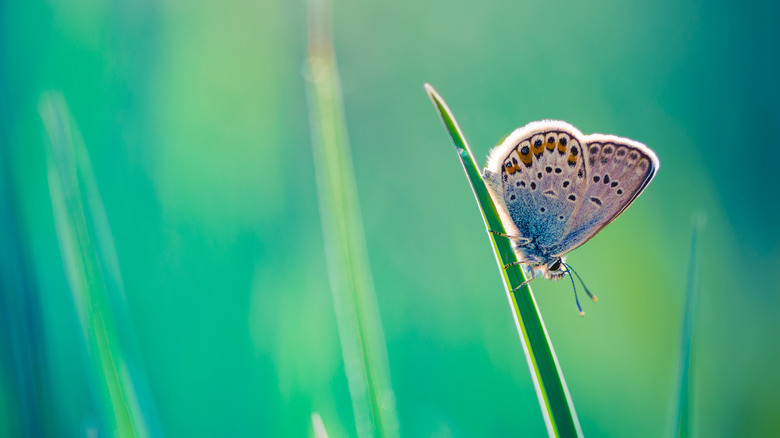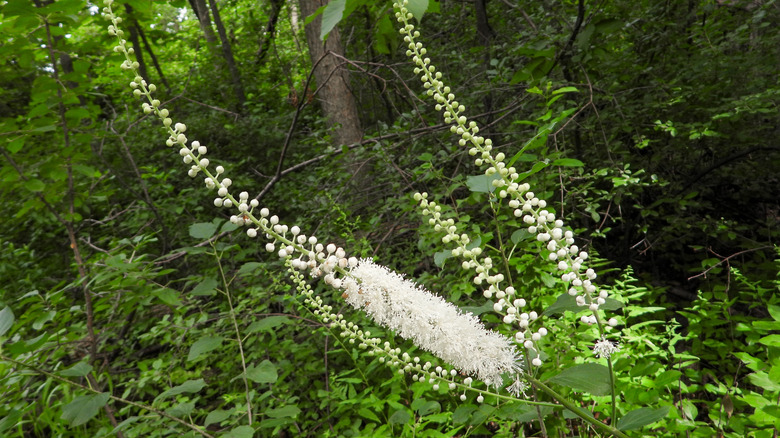The Perennial Bloomer That Grows Well In Damp Soil And Attracts Butterflies
Medicinal plants, whether their healing ability has been clinically proven or not, are fascinating because of their lore. Black cohosh (Actaea racemosa L.) is a traditional forest-dweller with lots of uses in folk and alternative medicine. If you haven't heard of this flowering plant beyond its purported palliative effects, you probably didn't know that this moisture-loving plant has an elegant floral spike that several species of butterflies happily feed on.
Black cohosh is a summer-blooming perennial found in deciduous forests from southeastern Canada to as far south as Mississippi and westward into Iowa. It's hardy in zones 3 to 8, but it needs to be in rich, moist soil. These plants like spots with significant shade that still offer a few hours of morning sun. In this range, no butterfly garden is complete without black cohosh. This plant is perennial, but it may take a few years for it to establish and flower. Once it does, get ready for the drama of blossoms reaching heights of 4 to even 7 feet. The striking spectacle and wildlife benefits of this flower are well worth the wait.
Black cohosh is essential butterfly food
We typically imagine butterfly-friendly flowers as providing nectar for these fairy-like insects. In the case of black cohosh, it's the caterpillars of a group of butterflies that feast on the flowers. Among these are the Spring Azure, Appalachian Azure, and Holly Blue butterflies, and it's the tantalizing flowers that help these insects reach their flight stage.
The pollen from the funky-sweet flowers attract a bevy of insects, but butterflies aren't among the primary pollinators, although they're likely to spread a bit of pollen after laying their eggs on the flower buds. Once your black cohosh is ready to bloom, try to spot butterfly eggs deposited on the buds. However, it's the chewing and swallowing of these flowers once they hatch that get these three types of blue butterflies going.
The Appalachian Azure butterfly is entirely dependent on this plant in its caterpillar stage, so if you live in this insect's range, planting this graceful flower will do a necessary favor for this insect. This delicate blue butterfly can be found in forests from southwestern New England, south to the northern tip of Georgia, and as far west as the Ohio Valley and even southern Missouri.

